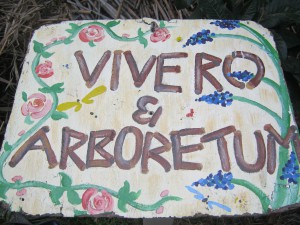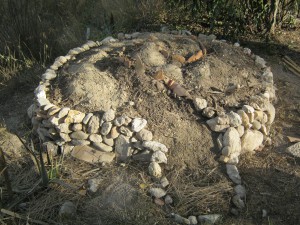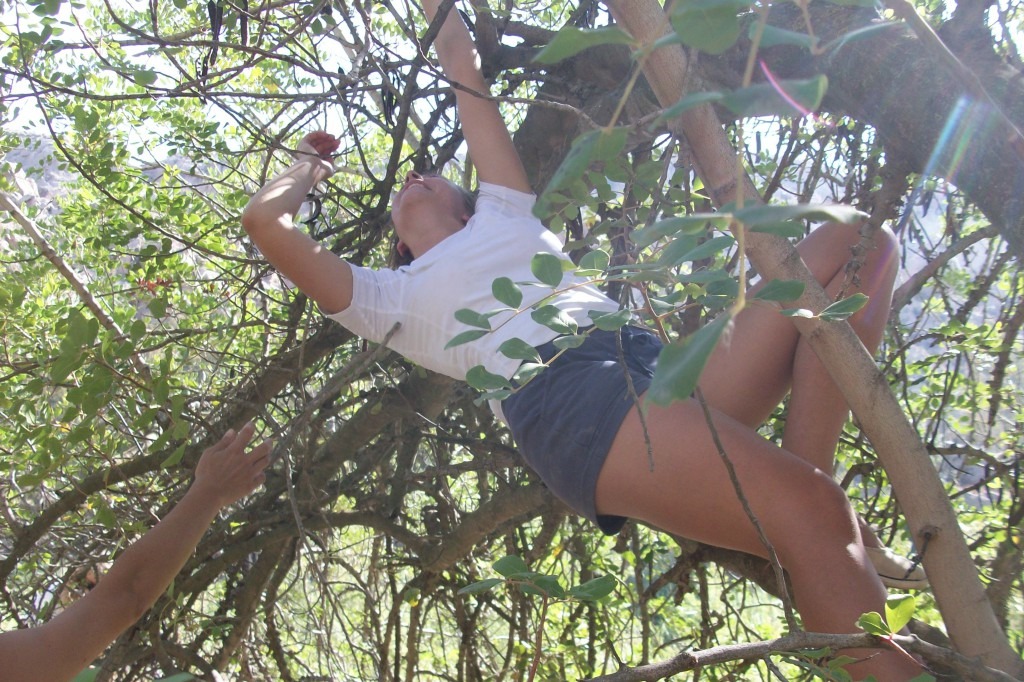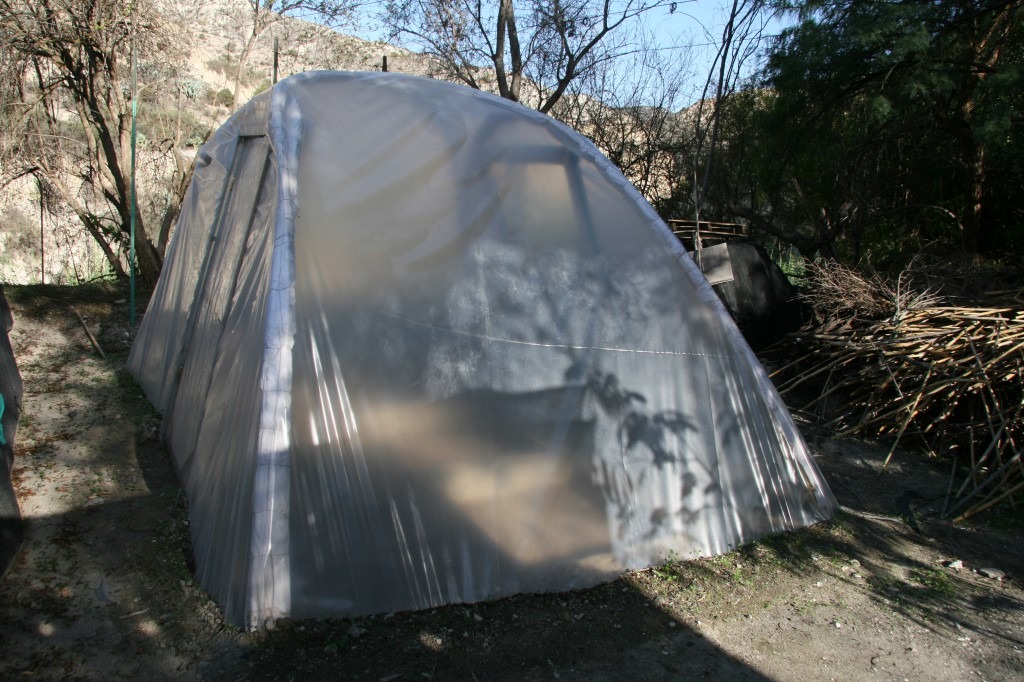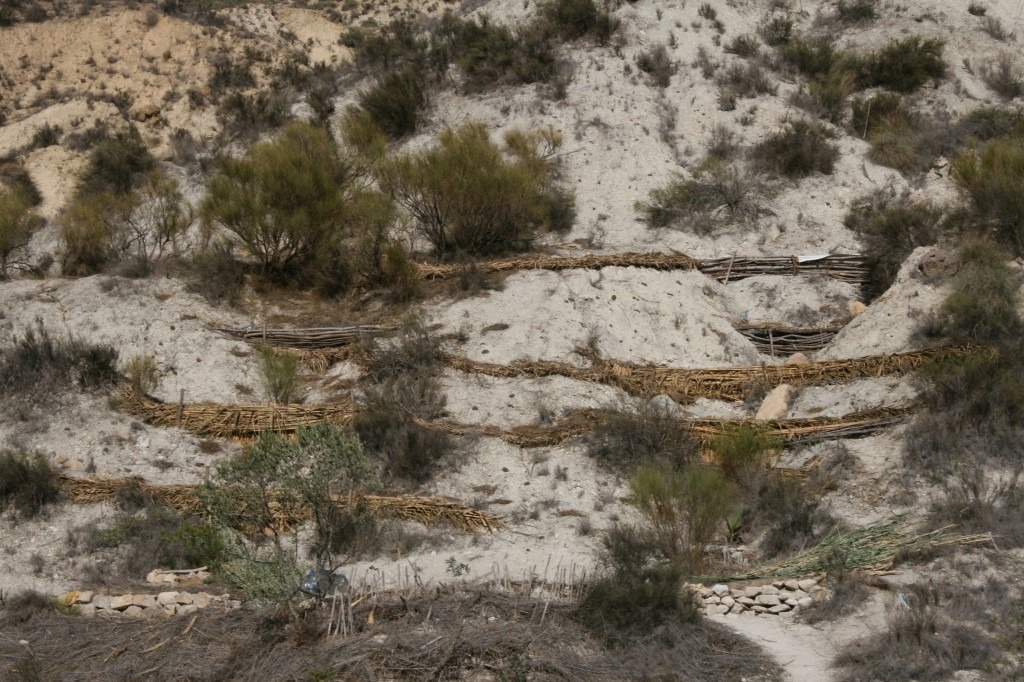Drylands Management
As an EVS volunteer, I wanted to look back over the last semester I spent in Sunseed as an assistant of Dryland Management Department. Originally coming from a completely different background, I had to learn everything from the very beginning. Before I leave and go back to my daily life in Paris, I wanted to share some parts of this fulfilling experience:
When I first arrived in February, Dryland Department was dedicating part of its time to planting different tree species on Allan’s land, as a part of its reforestation duty. Experimenting with carob trees, we could note after a couple of months that the place where the tree was planted had a crucial impact on its survival. Planting in the shadow and in the terraced part of the land look to have increased the chances of survival of the tree. We also observed that some of the species we planted, such as the Salsola oppositifolia, were more likely to survive in this arid environment.

Cleaning behind the compostero
In April, Dryland Department initiated a long-term project which was to clean and improve the area of the “compostero” where is kept the hummanure compost next to the vivero. The idea was to provide more shadow to the compost in order to keep it quite moist during the heat of the Almerian summer. We first substituted all the trash stored behind the compostero with soil. We wanted to use this strategic spot to plant trees that will provide natural shade to the compost.

Extracting Auxina from sprouted lentils
In May, Dryland Management department lead an experiment on the use of Auxina to help stimulate plants’ roots growth. The Auxina is a hormone naturally secreted by the plants and is known to help the stimulation of plant’s roots and speed up its development. We tried to extract some from sprouted lentils, getting a mixture out of the roots and water. The mixture was supposed to be ready to use after being kept 24 hours in the dark. Unfortunately, it turned out that the use of the mixture didn’t show any notable effect.

Visiting Rodalquilar botanical garden
In June, Dryland Department drove a couple of volunteers to the botanical garden of Rodalquilar while the trees were still blossoming. The end of the spring was the perfect time to identify the different species thanks to their flowers. Rodalquilar’s botanical garden gives interesting details about the properties of the plants that grow all around the semi-desert of Almeria. The carob tree, for example, has been used for a long time, in the region, for its medicinal properties as syrup for coughing.The same month, the Dryland coordinator, Elena, helped with volunteers, ended the construction of a caña roof to the compostero, providing a bit of the indispensable shadow during summertime.


Before and after with the caña roof

